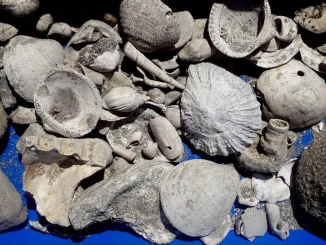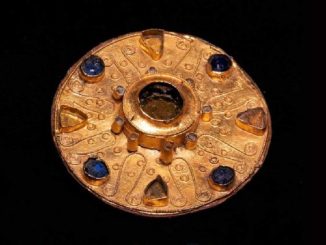The large number of artifacts led archaeologists to believe that the newly discovered tomb belonged to elite craftsmen.

The tomb contains many artifacts such as gold headdress decorations (left), gold ear jewelry and semi-precious stones (right). Photo: Miłosz Giersz
Archaeologists excavating a cemetery near the town of Huarmey, north of Lima, Peru, discovered a 1,300-year-old ornate tomb, dating back to the Wari civilization (500 – 1000), Live Science on March 23. /9 reported.
The tomb contained the remains of a high-ranking man called Lord Huarmey and six others, some of whom may have been reinterred after their first burial elsewhere. The six remains include four adults, most likely two men and two women, and three people possibly in their teens, according to the University of Warsaw’s Department of Archeology.
All remains in the tomb were buried with gold and silver jewelry, bronze tools, knives, axes, baskets, textiles, raw materials for making baskets, and wooden and leather items. This large number of items makes the archaeologists believe that the people buried here were skilled craftsmen and belonged to the Wari elite.
“We can call this area of the royal necropolis the ‘Gallery of the Upper Craftsmen’. For the first time, we found the burial place of the upper-class men of the Wari, who were also talented craftsmen and artists,” said Miłosz Giersz, an archaeologist at the University of Warsaw who led the project.
Giersz’s team discovered the new mausoleum in February. It is located near a larger mausoleum discovered by Giersz and his wife Patrycja Prządka-Giersz, an associate professor at Warsaw University, in 2012. This large mausoleum contains the remains of three high-status women called “Queens of Wari”. The queens were buried with 58 others, most of them noblewomen, possibly reburied, but some belonged to lower social classes and were apparently sacrificed.


